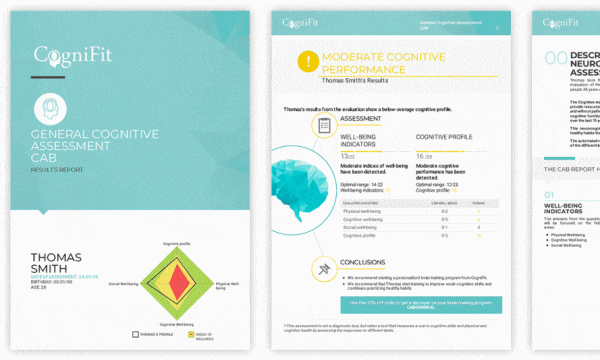
Theories of Personalities: Everything you need to know
When you tell your friends about a date you had, how often do you immediately describe their personality? I’m sure you often find yourselves explaining how generous, soft-spoken, funny, well-mannered, or happy your date was. I’m also almost certain that you’ve found yourself explaining the negative aspects of your date’s personality. Maybe you have found yourself having to, unfortunately, explain that your date was rude, inattentive, crude, angry, cold instead of warm, or even sad. Theories of personalities are a largely debated topic through psychology, in this article, we’ll explain the different perspectives of the theories of personalities, the authors of the theories of personalities and how these theories of personalities and perception have been so important in psychology.

Theories of Personalities
What are Theories of Personalities?
Personality plays a role in our lives every day whether we realize it or not. From our morning interaction with the barista at our local coffee shop to deal with our boss at the office, and even our end of the day exchange with the uber driver giving you a lift home after a long day. While we can all vaguely give our own definitions of personality, and what we think it is. The American Psychological Association describes personality as patterns of cognitive processes, feeling and behaving that differs among individuals.

General Cognitive Assessment Battery from CogniFit: Study brain function and complete a comprehensive online screening. Precisely evaluate a wide range of abilities and detect cognitive well-being (high-moderate-low). Identify strengths and weaknesses in the areas of memory, concentration/attention, executive functions, planning, and coordination.
Regardless of how we define personality, it is such a factor in human behavior across the globe that psychology has dedicated a whole field of study towards better defining and understanding personality. The study of personality in psychology is broken into two broad areas according to the APA: The first is understanding the differences between an individual’s characteristics, such as the ability to socialize or irritability. The second is building upon the understanding of how the parts of a person come together to form the whole.
The interest in psychology is not new by any means, this interest can be traced as far back as Sigmund Freud and his theories of personalities. Throughout the years there have been many theories of personalities put forward by some of the most notable figures in the field. Many theories of personalities have been put forward as to how people develop, what life events or milestones build a person and their personality, and just how important personality is to a person’s development and their life. Personality is thought to have multiple components, from consistency, psychological and physiological aspects.Personality is thought to be the driving force behind behavior and action, and it is believed that a personality type can have a multitude of expressions and be shown not only through behavior but also social interactions. Regardless of what definition of personality we agree upon, one thing it is one of the largest studied concepts in psychology still to this day.
Theories of Personalities Perspectives
Personality theory is not one concrete theory, but rather a plethora of theories of personalities put forward by numerous figures in psychology across many different periods of time. Theories of personalities can be broken down into four major categories or perspectives as they are more commonly known:
- Psychoanalytic or Psychodynamic perspective
- Humanistic perspective
- Trait theory
- Social Cognitive Perspective
A number of influential persons have contributed much to these perspectives and have helped shape our understanding of personality and development. People such as Sigmund Freud, Erik Erikson, Carl Jung, Abraham Maslow, Robert McCrae, Paul Costa, and many other names will be spoken about as we take a look at each perspective in depth and take a better look at how they attempt to broaden our understanding of personality theory which plays such a crucial role in our lives and understanding or daily events.
Theories of Personalities: Psychoanalytical Perspective
Also known as the Psychodynamic Perspective, it seeks to address how the personality and person develop, in a way it also addresses human development. The main proponent of this personality theory was its founder, Sigmund Freud. Anyone who has taken a basic level psychology class has heard this famous name, most likely within the first week. This was and many consider to still be a major theory in the field of personality psychology. Freud believed that personality develops within childhood and is molded through an order of five phases of psychosexual development. Freud called his theory “the psychosexual theory of development”. Freud believed that while in each stage the child is faced is presented with a challenge, this challenge will pin the child with a conflict between a series of biological drives and a series of social expectations. If the child should complete their challenges in a manner which is acceptable then that child will have satisfactorily completed that stage of development. Successful completion of each stage would lead to an individual with a matured personality. Freud’s beliefs of personality and human development gained him a bevy of followers a few of which would go on to shape psychology with their own theories of personalities.
Alfred Adler was well-known to be a follower of Freud, he was what many in the psychology community would call a “Neo-Freudian”. He developed his own take on the psychodynamic perspective of personality which was surrounded by the idea of the individual and the notion of inferiority. He believed that individuals are constantly trying to atone for feelings of inferiority. According to Adler, the individual commonly suffers from an inferiority complex in which they do not believe they are of any worth or that they cannot measure up to societies standards. Adler agreed with Freud that personality develops in childhood, however, he did not put as much emphasis on sexual development. Instead, he put emphasis on three crucial responsibilities that all individuals must meet. These obligations are occupational tasks, societal tasks, and love tasks. Each of these shapes an individual and their personality. Through occupational tasks, Adler believed that the individual learned crucial skills in order to find a career that would enable them to construct a living. Societal tasks refer to the individual’s ability to build and maintain friendships and love tasks according to Adler refer to the individual’s ability to find a partner to build an intimate and long-term relationship. Adler believed that all three aspects were crucial to an individual’s development as well as their personal development. One supplement that may improve cognitive function is Magnesium, get 7 forms of magnesium with magnesium breakthrough from our partners.
Another Neo-Freudian and a highly influential person in the field of personality psychology is Erik Erikson. Erikson’s theories of personalities put forward that one’s personality develops over their entire lifespan; his belief is rooted in a psychosocial perspective. The personality of an individual develops through a series of social interactions. He was not too keen, like many others, on Freud’s belief that personality was developed through sexual stages. Eric Erikson developed an eight-stage theory of personality, through these stages he believed that the individual developed a healthy personality. This healthy development of personality was contingent upon the successful completion of each stage. Erikson stages are as follows: Trust vs. Mistrust, Autonomy vs. Shame, Initiative vs. Guilt, Industry vs. Inferiority, Identity vs. Role Confusion, Intimacy vs. Isolation, Generativity vs. Stagnation, Ego Integrity vs. Despair. Each of these stages is believed to play a crucial role in the personality development of the individual, Erikson believed that through each successful completion an individual develops a healthy personality.
Carl Jung came to the table with his own addition to the psychodynamic perspective of personality theory. The idea he developed is seen as a type of analytical psychology. Since all of the well-known theorists of the psychodynamic theory of personality are neo-Freudians it’s no surprise that Jung’s theory shares at least commonalities with Freud, both Jung, and Freud both shared an affinity for an individual’s unconscious and the role it plays in development and personality. However, much like the aforementioned figures, Jung also opposed Freud’s emphasis on sexuality. Jung’s idea of personality is focused around what he called the collective unconscious. Jung believed that Freud’s theory of the personal unconscious was actually universal, in which we all have commonalities in psychological patterns and traces of memory. Jung believed that these commonalities were apparent in universal themes that can be seen across cultural literature, art, and even in the dreams of people. Jung called these collective aspects of archetypes. Jung believed that we formed our personality based on our conscious experience and our collective unconscious. Our personality is structured as a compromise between our true self, and who society expects us to be.
The last but certainly not the least influential player in regard to the psychodynamic perspective of personality is Karen Horney. Karen was the first woman of the time to be trained as a Freudian psychoanalyst. Horney also focused on the unconscious, however instead of focusing on stages, or sexuality, she believed in “unconscious anxiety”. Horney believed that this anxiety was the result of needs going unmet, and feelings of loneliness and isolation. Horney can be seen as a contrast to Freud where he is criticized for focusing on men, she focuses on women and is credited with advancing feminism in the field of psychology.
To review the main theories of personalities of the psychodynamic perspective of personality theory, the main focus is put on the unconscious mind, as well as experiences of early development. These theorists believe that what we experience in our early years of childhood plays a crucial role in how we develop as individuals as well as how our personality develops. While their ideas may slightly differ, their premise of the unconscious and childhood remains similar. Let’s review the key contributors to this perspective and their ideas:
- Sigmund Freud: Placed heavy influence on early childhood, believed the unconscious and sexual development was key to developing one’s personality. Freud put forward the idea of the stages of psychosexual development.
- Erik Erikson: Believed that personality develops over the individual’s entire lifespan, derived the psychosocial theory of development, and the eight-stage theory of personality.
- Carl Jung: collective unconscious, archetypes, analytical psychology.
- Alfred Adler: Inferiority complex, believed all people have some feelings of inferiority that they must face by overcoming challenges. Believed an individual must overcome three tasks; Occupational, Societal, and Love.
- Karen Horney: Believed that the unconscious played a crucial role in the development and that unconscious anxiety has its roots in childhood. Parents can play a crucial role in unconscious anxiety based upon whether or not they meet the child’s needs and succeed in making the child feel wanted and secure instead of lonely and isolated. Brought feminism to the field of psychology.
Theories of Personalities: Humanistic perspective
The humanistic perspective which is also referred to as humanism is a different viewpoint on personality and a different perspective on theories of personalities. The humanistic perspective of personality theory looks to account for the person as a whole and take into consideration the understanding of the nature of man and the human condition. This take on psychology rejects the approach that the psychodynamic perspective takes. The psychodynamic perspective of personality theory believes heavily in the unconscious as well as putting great emphasis on early childhood experiences. The personality theory of the humanistic perspective takes a look at personality and development through the lenses of determinism, and forces of the irrational unconscious and instinct being the main driving force behind our personality, though, and behavior.
The humanistic perspective of theories of personalities was widely popular because it offered three things that its predecessors had not; it offered an understanding of human nature and condition, a bigger and broader interest in studying human behavior, and it seemed to have more practical methods in the practice of psychological therapy. The humanistic perspective of personality theory is built upon the basic ideas that humans have free will, are basically good and have a need that’s present from birth to improve the world, have a basic motivation to become self-actualized and find satisfaction through life fulfillment, and that conscious experiences are most important rather than the unconscious.
Unlike the psychodynamic personality theory, the humanistic personality theory only has two key theorists who built upon its basic beliefs and made it what it is today. These two people are Carl Rogers and Abraham Maslow, both names are common amongst psychology courses throughout the world. Carl roger’s main belief was that people are fundamentally good and are born with an inherent drive to improve themselves and the world. Rodgers core belief that the force behind human behavior and personality was the striving to become self-actualized. In order for an individual to grow and develop a healthy personality, Rodgers believed that they needed three things; genuineness, acceptance, and empathy. Rodgers identified five attributes that a person who has been fulfilled and developed a healthy personality should have; they should be open to experience, live existentially, have trust in their initial instincts, they should be willing to take risks and have a creative way of think, and lastly, he believed they shoals be living a fulfilled life. Aside from Rodgers’ belief of what allows a person to develop a healthy personality, he also had his own theory of what the main force behind personality development is. Rodgers believed in the self-concept, the idea of what a person thinks and believes about themselves in combination with the aforementioned factors is what is key to personality.
The other major player in the humanistic perspective of personality theory was Abraham Maslow. Maslow’s biggest contribution to the field of personality psychology is the hierarchy of needs. Maslow’s hierarchy of needs is a pyramid that places what a person is believed to have to accomplish in order for most basic needs, all the way up to ideas of self-worth and self-actualization. Maslow’s hierarchy of needs is arranged into five levels, at the very bottom is basic needs such as food, water, and clothing. Then as the levels rise it becomes less about our basic and primal needs and more about our higher needs. Maslow believed that the individual could not skip levels and that each level had to be met before the next level was attempted or achieved. Both Carl Rogers and Abraham Maslow make strong arguments for the humanistic perspective of personality theory, both take similar approaches. However, they differ when it comes to the belief in the stages of development when it comes to Maslow’s hierarchy of needs, the two are slightly divided. To give a brief overview of the humanistic perspective of personality theory which takes aim at looking at the person and the nature of humans to explain development:
- Carl Rogers- People are born with ingrained goodness, with the inherent striving to do good, and better themselves and the world. Rogers believed heavily in free will and human determinism.
- Abraham Maslow- Instead of putting emphasis on inherent goodness and free will, Maslow strongly emphasized that individuals develop through a hierarchy of needs. Known as the father of humanistic theory.
Theories of Personalities: Trait perspective
Thetrait theory of personality is concerned with explaining, pinpointing, and measuring specific universal traits that come together to form the human personality. While traits may be universal in a sense, researchers believe that by gaining a better grasp of what these traits are and what implications they have in terms of personality and behavior they may be able to better understand the differences between individuals. The trait perspective of personality theory puts far more emphasis on traits that we can actually see. If you ever found yourself wondering “why does my friend always hesitate when a new situation presents itself?” then you would be focusing on a trait called introversion. The trait perspective of personality aims to look at traits such as these and through this, we may just get a better understanding of why that friend decides to hesitate in new situations or why our significant other just can’t be open to trying that new restaurant or any other new experience. The trait perspective of the theories of personalities put little emphasis on the conscious or unconscious, the individual’s childhood, or any of the other aspects that the previous personality theories put heavy emphasis on. Instead, the trait perspective of personality theory puts emphasis upon individual aspects of personalities or traits and then use those aspects to gain a deeper understanding of what is personality.
In the trait perspective of personality theory, there are three main figures who have developed this personality theory into what we understand today. These three are; Hans Eysenck, Raymond Cattell, and Robert McCrae and Paul Costa. Let’s go a little more in-depth on each of these contributors and take a look at their idea on personality theory.
Hans Eysenck held the belief that personality has dimensions he believed it could be broken down to extraversion and introversion, emotional stability and neuroticism. Extroverts are those who generally enjoy being outgoing, enjoying new experiences, and just going outside of their comfort zone; the world is usually always a new adventure for them. Then we have introverts, introverts are generally the people who keep to themselves more. Introverts enjoy routine, small groups, and staying within their comfort zone. We then have emotional stability and neuroticism. Emotional stability can be characterized by being confident in one’s initial gut feeling, rarely second guesses themselves, and just take security in their emotions in general. Neuroticism can be defined as emotional instability. These individuals are often on edge, stressed, highly irritable, do not take criticism well, and are generally less fun to be around. I’m sure we all know someone who seems like this.
Raymond Cattell had a slightly different opinion. While he stayed focused on traits, since was a contributor to the trait theory of personality, he believed that there were 16 personality traits that could be used to determine the differences between individuals. The 16 traits that Cattell believed to be;
- Abstractedness
- Apprehension
- Dominance
- Emotional Stability
- Liveliness
- Openness to Change
- Perfectionism
- Reasoning
- Prolateness
- Rule-Consciousness
- Self-Reliance
- Social Boldness
- Sensitivity
- Tension
- Warmth
I’m sure there have been plenty of instances where we have referred to a friend as being too sensitive, or as someone as being a warm person, or even too apprehensive. While these traits can be used to measure personality, they can also be used in a bevy of other ways. They can be used in counseling such as, relationship counseling, deciding what field of work would be best suited for, and many other scenarios. Whether we know it or not, theories and personality play a very important role in our lives.
The last two contributors to the trait perspective of personality theory that we will mention are Robert McCrae and Paul Costa. Their contribution to the field of personality theory came as a two-man effort. They introduced the big five theory of personality which is still extraordinarily popular today. I must admit I find this contribution to be most interesting, mainly because my final project in my experimental psychology class was surrounding this theory. The big five theory states that there are five main aspects to personality. Those aspects are; Openness, Conscientiousness, Extraversion, Agreeableness, and Neuroticism. This personality theory is most often referred to as O.C.E.A.N in psychology classes. Each trait comes with a list of subtracts that can be used to make a hypothesis on how an individual may fair in certain situations.
Major contributors to the trait perspective of personality theory:
- Hans Eysenck: Dimensions to personality. Extraversion and introversion, Emotional stability and Neuroticism.
- Raymond Cattell: Belief in 16 aspects of personality.
- Robert McCrae and Paul Costa: Created the big five theories of personalities, O.C.E.A.N.
Theories of Personalities: Social Cognitive Perspective
The personality theory of social cognitive perspective pushes forward the idea that observational learning, self-reliance, and the influence of situations through life is what is most important in the development of personality. This personality theory was derived by Albert Bandura and Julian Rotter.
Bandura believed that personality is an influence of not just one variable but many such as cognitive functions, behavior, and context of situations all come together and play a major role. When Bandura mentions cognitive functions, he is referring to anything that has been previously learned or engrained in an individual such as beliefs and social expectations. By behavior Bandura was referring to the events in which we have been either positively or negatively rewarded thus learning or rejecting certain ways of acting. For context, Bandura was referring to the situations in which we have learned or reject the ways of acting. This was an important step in personality psychology because it was the first theory that did not just focus on one’s surroundings or their behavior, but instead, it credited both along with the context that is continually influencing each other.

CogniFit Brain Training: Trains and strengthens essential cognitive abilities in an optimal and professional way.
The second influence of the social cognitive perspective was a man named Julian Rotter. Taking Banduras ideas of personality development, Rotter went a step further and developed what he called locus of control. Rotter defined this as the perceived amount of control has in their life. He believed that this was a major factor in the development of personality Rotter broke up his idea into two parts, the internal locus of control and the external locus of control. The internal locus of control is the belief that an individual is in control of their behavior and their life along with its outcomes. The external locus of control is the belief that one’s environment influences their behavior, and what happens in their lives.
- Albert Bandura: Believed that cognitive function, context, and behavior constantly influenced each other in the development of personality.
- Julian Rotter: Internal and External locus of control.
Theories of Personalities: Conclusion
Personality is still, to this day, one of the most studied and debated about topics in psychology. It’s one of the most discussed topics in general, even outside of psychology. When you tell your friends about a date you had, how often do you immediately describe their personality? I’m sure you often find yourselves explaining how generous, soft-spoken, funny, well-mannered, or happy your date was. I’m also almost certain that you’ve found yourself explaining the negative aspects of your date’s personality. Maybe you have found yourself having to, unfortunately, explain that your date was rude, inattentive, crude, angry, cold instead of warm, or even sad.
Personality is one of the most important topics in the field of psychology because it is one of the most related issues to just about everyone. Personality is universal, everyone has one. By studying theories of personalities and how personality develops is not an effort that only serves a certain set or population of people, but rather everyone around the world. Regardless of gender, race, age, religion, everyone has a personality made up of different traits.
As we can conclude from this article, were not the only ones who have put emphasis on theories of personalities, it’s evident that some of the greatest minds in psychology have pondered the same question. If we really think about it, it’s interesting that we may have asked the same questions as some of the most well-known people to influence many different fields. Personality is what makes each of us unique, we all have different traits and different combinations of traits which allow us to be the person we are. Our personality is what makes us the person all our friends, and loved one’s care for and adore. So, next time you interact with someone, try to take a moment and ponder what many of the previously mentioned people pondered “what is personality and how does it develop”? For a little-added fun, maybe you can think up your own theories of personalities. Who knows, maybe one day well be studying and talking about your theories of personalities!
References
(n.d.). Retrieved July 10, 2018, from https://study.com/academy/lesson/hans-jurgen-eysenck-personality-theory-lesson-quiz.html
(n.d.). Retrieved July 10, 2018, from http://www.apa.org/pubs/books/4316810.aspx
(n.d.). Boundless Psychology. Retrieved July 10, 2018, from https://courses.lumenlearning.com/boundless-psychology/chapter/social-cognitive-perspectives-on-personality/
(n.d.). Boundless Psychology. Retrieved July 10, 2018, from https://courses.lumenlearning.com/boundless-psychology/chapter/psychodynamic-perspectives-on-personality/
Cherry, K., & Gans, S. (2017, July 20). What Is Personality and Why Does it Matter? Retrieved July 10, 2018, from https://www.verywellmind.com/what-is-personality-2795416
Cherry, K. (2018, January 4). 16 Factors That Make Up Your Personality. Retrieved July 10, 2018, from https://www.verywellmind.com/cattells-16-personality-factors-2795977
Cherry, K. (2018, April 25). What Are the 4 Perspectives on Personality? Retrieved July 10, 2018, from https://www.verywellmind.com/personality-perspectives-2795950
Department of Psychology. (n.d.). Retrieved July 10, 2018, from https://psychology.fas.harvard.edu/people/raymond-cattell
McLeod, S. (2014, January 01). Saul McLeod. Retrieved July 10, 2018, from https://www.simplypsychology.org/carl-rogers.html
McLeod, S. (2014, January 01). Saul McLeod. Retrieved July 10, 2018, from https://www.simplypsychology.org/carl-jung.html
McLeod, S. (2015, January 01). Saul McLeod. Retrieved July 10, 2018, from https://www.simplypsychology.org/humanistic.html
McLeod, S. (2018). Maslow’s Hierarchy of Needs. Retrieved July 10, 2018, from https://www.simplypsychology.org/maslow.html
N., & M.S., P. (2015, June 19). What is PERSONALITY? definition of PERSONALITY (Psychology Dictionary). Retrieved July 10, 2018, from https://psychologydictionary.org/personality/














